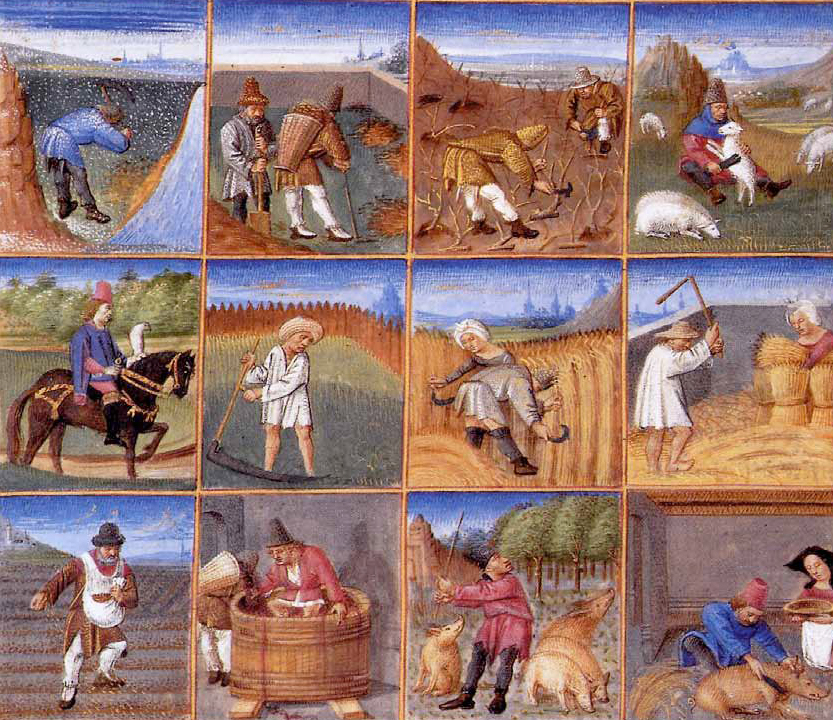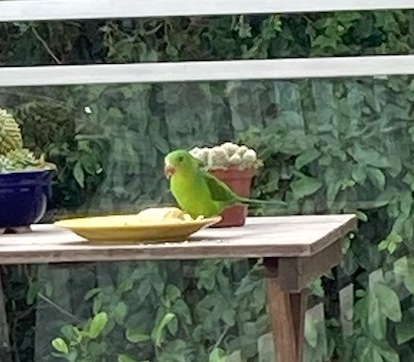
Weather
“…we are filled with wonderment at the changes we see in the seasons and the weather…” St. Montfort, quoted in my previous post
I’m not sure wonderment is quite what we are filled with most of the time. Complaint might be a better description. Is there any weather condition that doesn’t inspire complaint? If I don’t complain about today’s weather someone else will do it for me.

Ah, some awe at the glory of Creation
Some lovely quotes from The Love of Eternal Wisdom, by St. Louis de Montfort.
(from section 33): Apart from considering the different species of angels whose number is well-nigh infinite, and the varied brightness of the stars and the different temperaments of men, we are filled with wonderment at the changes we see in the seasons and the weather, at the variety of instincts in animals, at the different species of plants, at the diversified beauty of the flowers and the different tastes of the fruits.
(from section 34): Eternal Wisdom has revealed these things to the saints, as we learn from their biographies. At times they were so astonished at the beauty, the harmony and the order that God has put into the smallest things, such as a bee, an ant, an ear of corn, a flower, a worm, that they were carried away in rapture and ecstasy.
(from section 35 & 37): If the power and gentleness of eternal Wisdom were so luminously evident in the creation, the beauty and order of the universe, they shone forth far more brilliantly in the creation of man. For man is his supreme masterpiece… We might say that eternal Wisdom made copies, that is shining likenesses of his own intelligence, memory, and will, and infused them into the soul of man so that he might become the living image of the Godhead. In man’s heart he enkindled the fire of the pure love of God…
But alas…
Interesting that he comments elsewhere (reference now forgotten) that one of the effects of original sin is that we are too easily convinced that goodness is not particularly glorious, and that evil is not particularly awful.

Sunlit leaf parakeet
A new visitor came to the feeding station on the balcony yesterday. It was some sort of parakeet, with a plumage that seemed lit from within by golden light, like a leaf with the sun shining through it. It was so perfectly beautiful. It ate very quietly for 20 minutes or so before disappearing. It was very unlike the noisy mob of maroon and green parakeets that frequent the feeder.
When I looked it up it turned out to have the unfortunate name of “Plain Parakeet.” What an atrocity. I’ve renamed it “Glorious Sunlit-Leaf-Green Parakeet”.

That’s my blurry phone photo. Here are some professional photos and information:

Sounds
Listening to a Corelli sonata after lunch it occurred to me that nothing else I listen to on a regular basis comes anywhere near that for beauty. The sound of the wrens singing at dawn is possibly second. Silence is right up there. There are some faint sounds of rain or surf drowned out by other noises during the day. At night they can be gently pleasant Most anything else is beautiful only by association (the sound of a friend’s voice, for instance), not in itself; the rest is simply unpleasant: the sounds of metal being cut, hammering, drilling, honking, wheels on cement, loud motors, the harsh voices and jangling music of advertisements, and so on.
Learning some music this morning was pretty.
But the sonatas aren’t even in the same category. What a treasure to be able to listen to something so beautiful. Here’s some example:
Wish I had a picture
Exercise rider at the track this morning was reading his phone while galloping a horse.
Where’s my atelier?
Some frustrations in recent years have revolved around an intense desire to make beautiful things running into a lack of skill or time to make them combined with a lack of available skilled people to pay to do them for us. Several friends and I have formed an unofficial ‘atelier’ (the common Brazilian-via-French term for an artist’s studio) where we do all sorts of little projects. The atelier isn’t even in a fixed location, though we sometimes work at each others’ houses and we share materials.
Some recent projects have included: experimenting with making arrangements of artificial flowers, painted gold, in imitation of the metal flowers found on baroque Brazilian altars; making rosaries; designing embroidery for altar linens or chasubles; sewing altar frontals; redoing the decoration on old chasubles; and making robes and dresses for religious statues.
Some of the work has been partially outsourced to shops, but there we frequently run into our own problem. The professionals are so overburdened and behind schedule that it can take many months just to hear that they haven’t yet started on your project…
Most of the professionals are family businesses, with a mom or dad being the main artisan, and the kids and spouse helping out with simpler tasks, accounting or deliveries. In other words, there’s really just one person doing all the work, and they don’t want to turn away anyone who wants work done. There’s also a tendency here to give priority to higher status people or people with urgent deadlines (ordinations, for instance) so the line is constantly being jumped by priority clients, leaving others in a never-ending tail end. Thus the desire to do it my darn self…
I then realize my own line is just as slow that of the pros. In a fantasy life I’d have a workshop full of diligent elves making all my ideas to order. It feels a bit of a shame to have a head so full of ideas and not enough hands or skill to make them.
Fiberglass in the wild!
Go, Camille!
I’ve followed Camille’s mustang training for a bit, and love this theatrical, brilliant routine she did at a recent competition.
Medieval trees
I was startled one day to see a tree on a city street in Spain (possibly in Oviedo) that looked just like one of the stylized trees in a medieval miniature. It had been so tightly pruned that it was no more than a few meters high and had pompoms of leaves at the end of short branches. It looked almost exactly like this tree in a depiction of Moses before the Burning Bush. I’d assumed the pom-pom tree was a whimsical invention of the artist. Instead it turned out to be a depiction of a type of pruning.

Many medieval images depict scenes in towns or in gardens – domesticated landscapes. I expected there to be a lot of small, symmetrical trees there, since that’s what trees look like in that context. But what would trees look like when depicted in wilderness settings?



More on this in the future, perhaps.